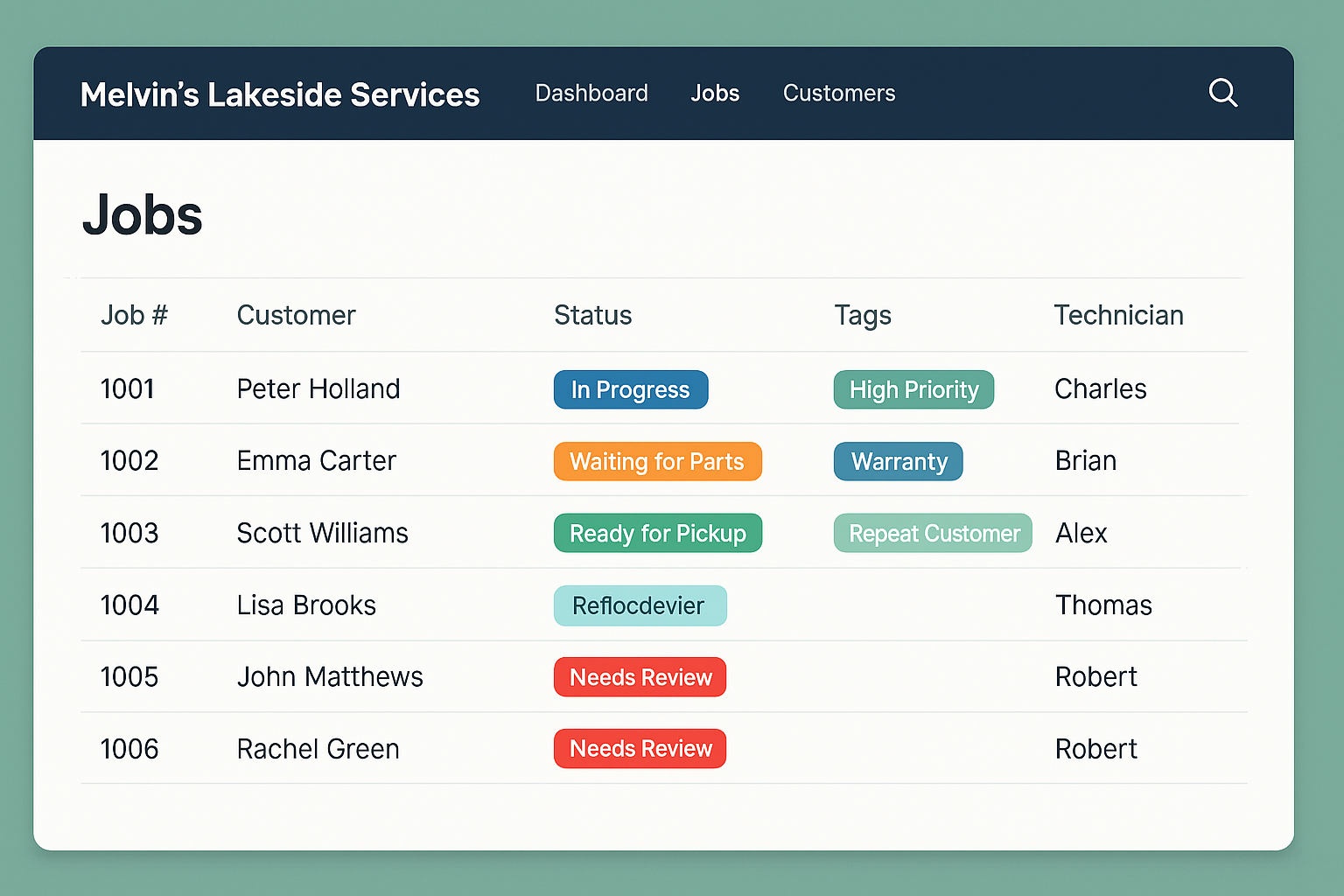
How to Optimize Your Workflow With Tags, Statuses, and Flags
How ShopTrack’s features help prioritize, organize, and avoid job confusion.
Product & Platform
The origin story of ShopTrack and the everyday frustrations that inspired a better way.
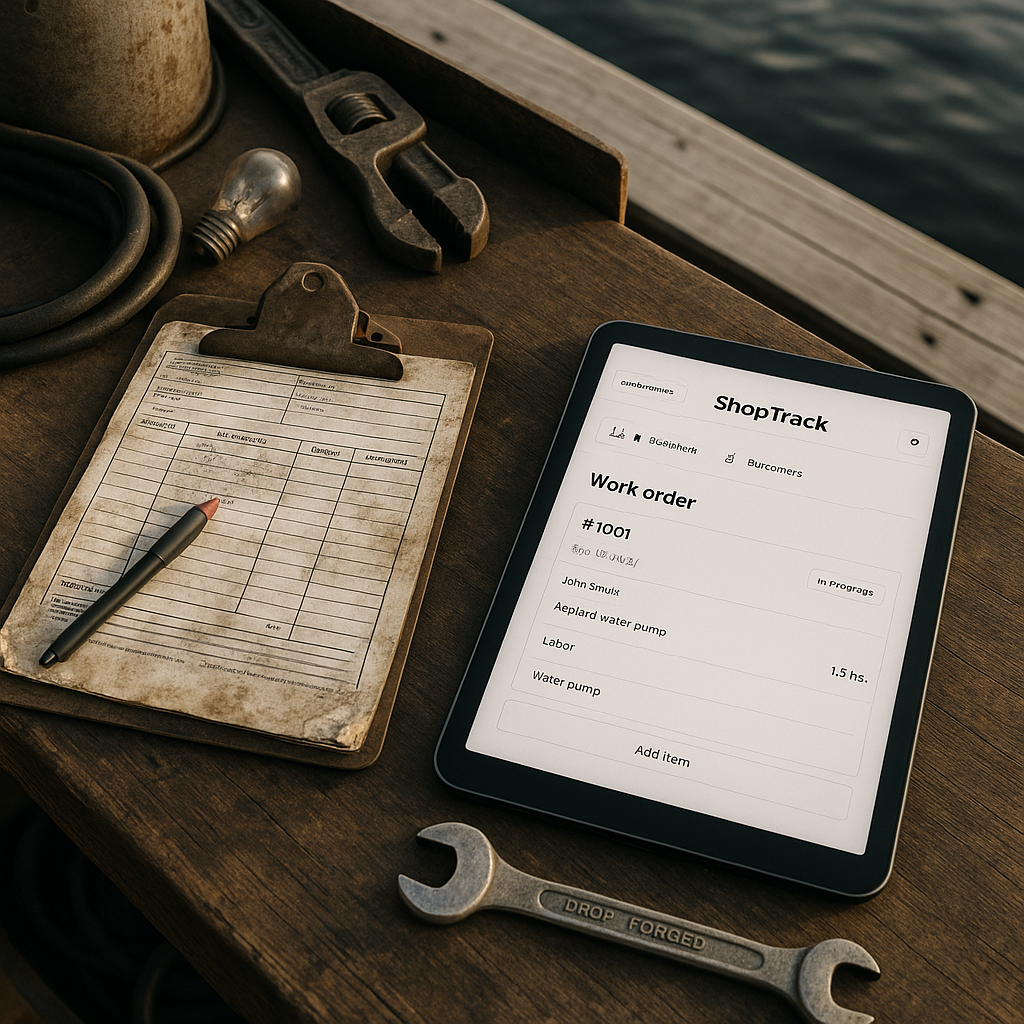
Running a marine service center should be about helping people get back on the water—not drowning in paperwork, confusion, or miscommunication.
But that’s exactly what we found ourselves doing in the early days of operating a full-service marine shop at a marina in North Texas. Like many shops, we started out the old-school way: paper and pen for quotes, invoices, and work orders. It worked—until it didn’t.
Paper has a short shelf life in a marine environment. Between oil-slicked fingers and test drives that involved hauling paperwork down to the lake, our work orders would come back wrinkled, water-stained, and sometimes completely illegible. We tried making copies to keep backups, but even that created new problems—multiple versions of the same job, with no clear way to know which one was the most accurate or up-to-date.
Eventually, we moved to spreadsheets. We created templates for quotes and invoices and kept a shared file to manage active work orders. This helped somewhat. Our service advisor could now track progress and even centralize some communication with customers.
But even that didn’t scale well. Searching through tabs and folders for a specific job became a scavenger hunt. We couldn’t quickly filter by customer name, boat type, or service status. Sometimes, we'd be looking at outdated files because someone forgot to save the latest version.
What finally pushed us to take action was realizing how much time and revenue we were losing—just by not having a formal system. Missed follow-ups. Lost quotes. Repeated phone calls for simple updates. We weren’t just frustrating ourselves—we were frustrating our customers.
That’s when the idea for ShopTrack was born.
We didn’t want a generic repair shop platform. We needed something that understood the specific workflows of marine service centers:
We built ShopTrack to solve these problems for ourselves—and for other marine shops facing the same pain.
ShopTrack helps marine shops move from guesswork to clarity with:
At the end of the day, marine service is about trust. If a customer drops off their boat and doesn’t hear back, that trust erodes. If they get billed for something they didn’t approve, it’s gone. We built ShopTrack so your process builds confidence—not confusion.
We’ve lived the chaos. We built the solution. And now, we’re sharing it with other marine shops who are ready for a better way.
Stories and information about the ShopTrack platform, features, and roadmap.

How ShopTrack’s features help prioritize, organize, and avoid job confusion.
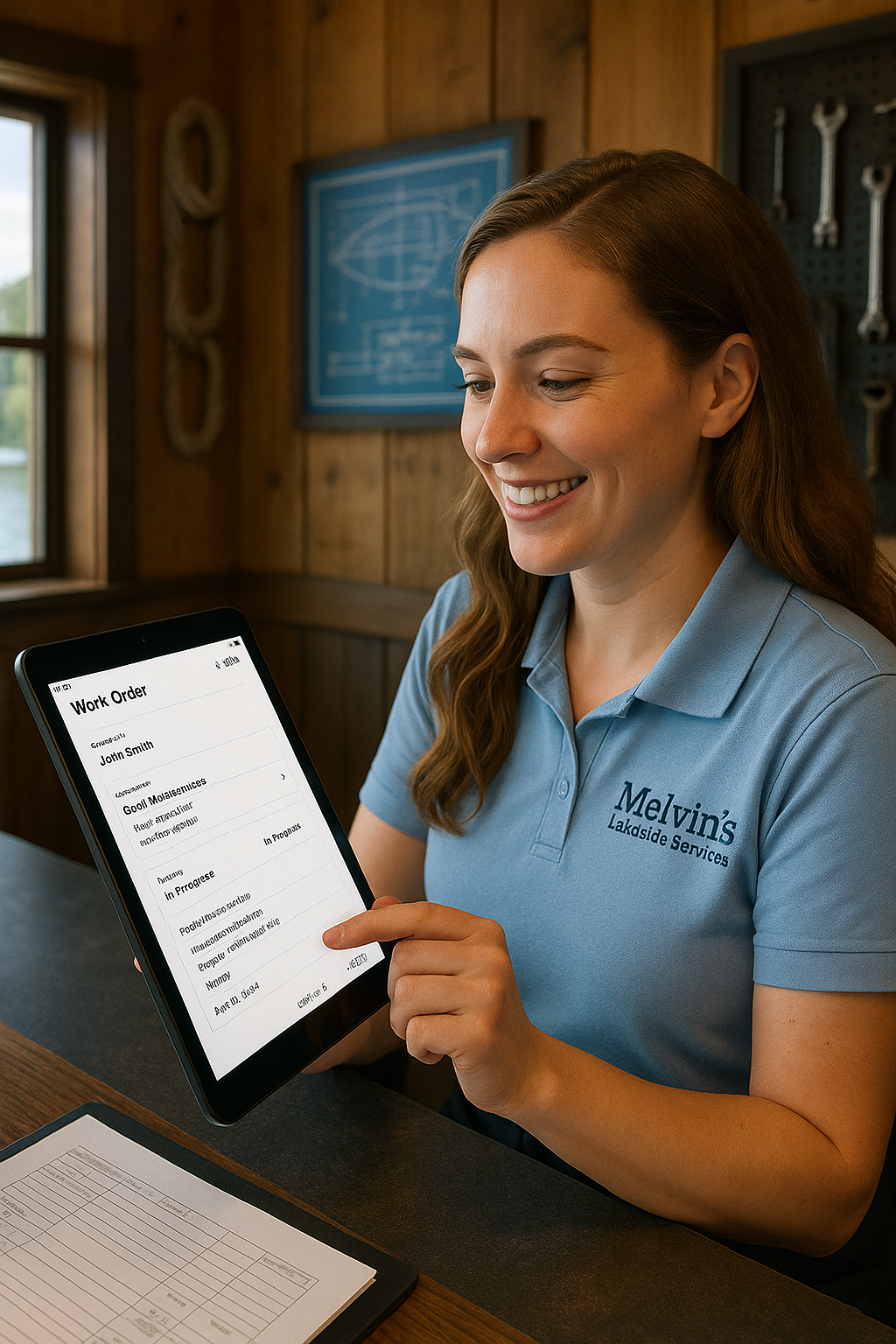
Training and workflow tips for bringing front desk teams into the ShopTrack ecosystem with confidence and consistency.

A look back at the insights, lessons, and industry shifts covered in our blog series—and where we go next.
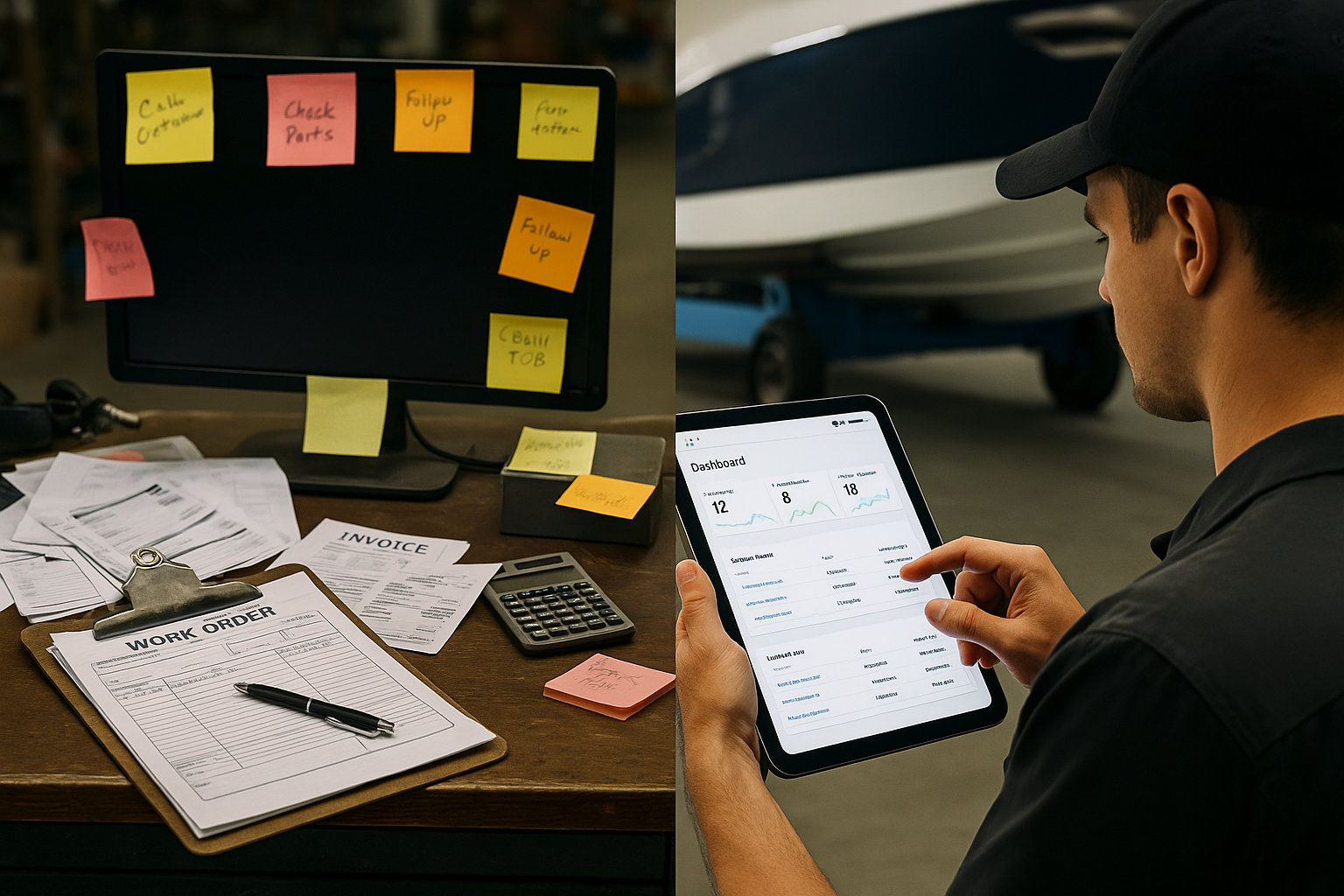
Follow a fictional shop as it transforms operations using ShopTrack—from paper chaos to digital success.
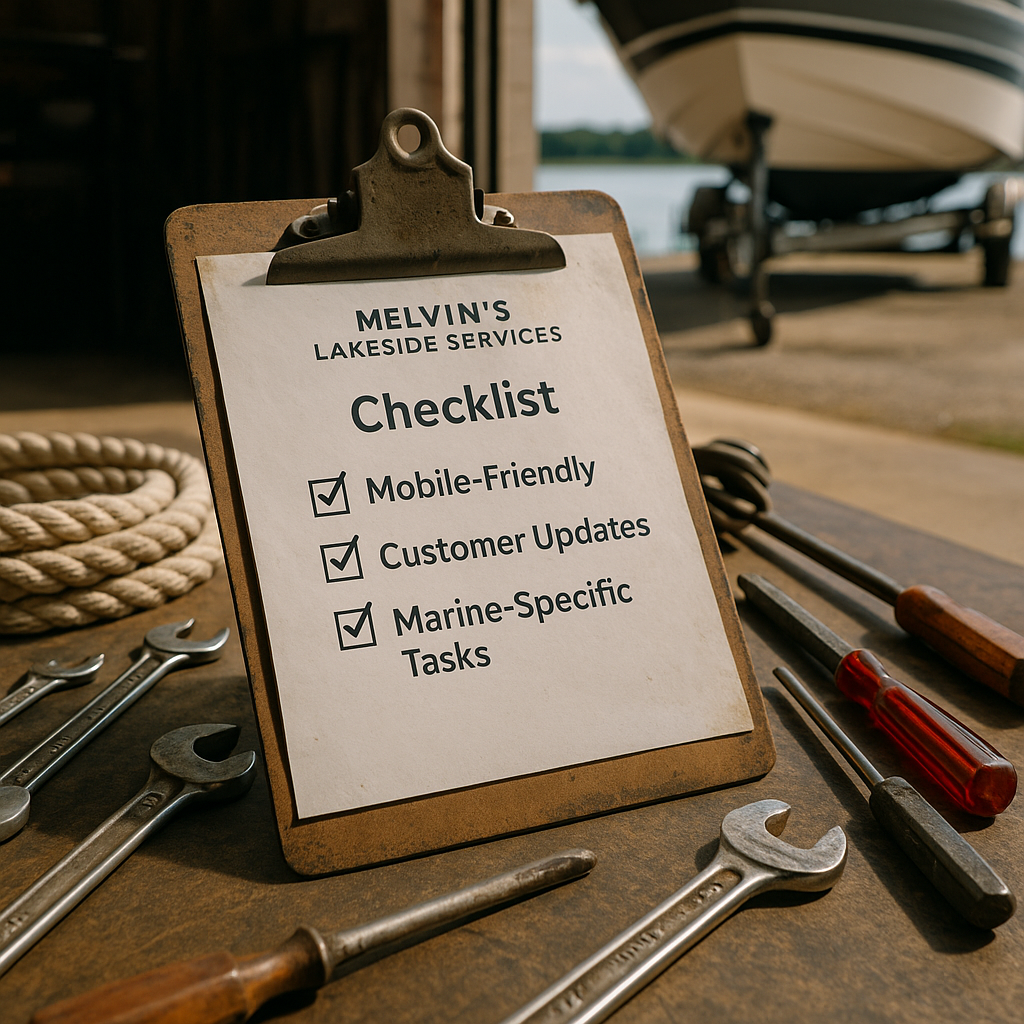
Don’t settle for a generic tool. This checklist ensures your platform fits the specific needs of marine service centers.